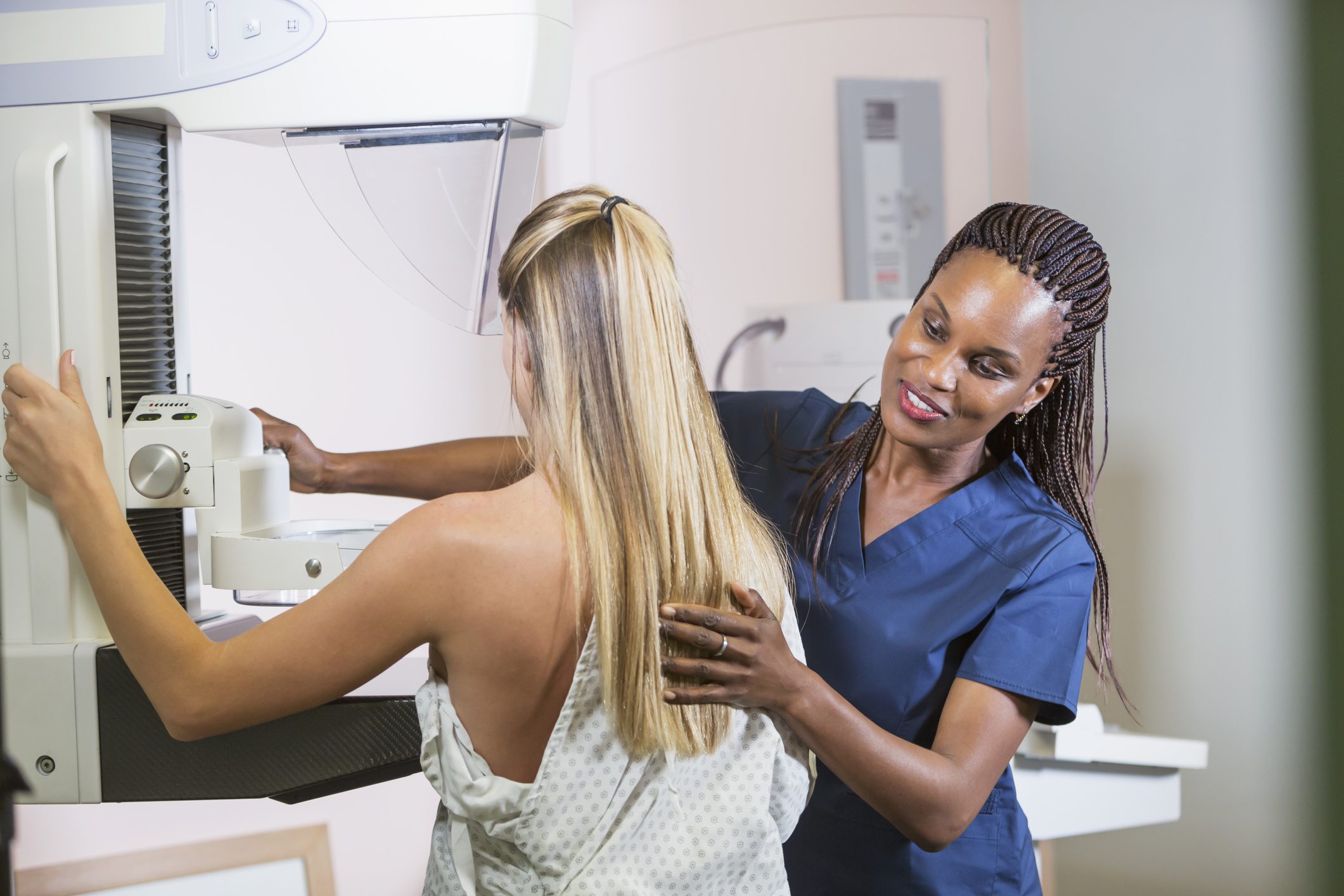If you’ve been told you need a mammogram, you may have questions. There’s a lot of misinformation circulating, and some of it may lead you to believe that you shouldn’t get a mammogram because it’s not important or even dangerous. Here, we look at some common mammogram myths, so that we can debunk them with the truth.
- Myth #1: Mammograms aren’t important if you have no family history of breast cancer. Whether or not you or anyone in your family has ever had symptoms of breast cancer, if you’re over 40 years old you should be getting an annual mammogram. Mammograms are used for early detection, which means they find cancer before you can even feel a lump. When you catch breast cancer in the early stages, your chances of survival are significantly higher than if you wait. How significant? Early detection leads to a survival rate of 99 percent, as opposed to late-stage discovery of breast cancer, which gives you only a 27 percent chance of survival. Consider this fact: 75 percent of women with breast cancer have no family history of the disease.
- Myth #2: The radiation used in mammograms is unsafe. It’s true that mammograms use radiation, but it’s a very small amount. Mammography is a highly regulated screening tool, under the supervision of the Food and Drug Administration and other regulating agencies. As long as you go to a facility certified by these agencies, there’s no cause to question the safety of the procedure. In fact, the dose of radiation that you receive from a mammogram is about the same as radiation you’d get from just living everyday life for two months.
- Myth #3: A traditional mammogram is just as good as a 3-D mammogram. The 3-D mammogram is much more advanced than the traditional 2-D mammogram, displaying more images of the breast that can be viewed by the physician radiologist from different angles and depths. This provides greater clarity, which allows doctors to more accurately distinguish between normal tissue and cancer. The most modern diagnostic tool available for early detection of breast cancer, the data provided by 3-D mammography is 40 percent more effective in detecting early cancer, with a 40 percent decrease in false alarms.
- Myth #4: A screening mammogram will find any type of cancer present in breast tissue. There are limitations to mammograms, and when breasts are very dense, cancer is often hidden by the tissue. Sometimes, normal breast tissue doesn’t just hide cancer, it mimics it. That’s why doctors additionally use other tools such as breast ultrasound or a breast MRI, for women with dense breast tissue.
- Myth #5: If your mammogram is normal, you can skip the next year’s mammogram. Mammograms are not preventative, so a clear mammogram does not guarantee that future mammograms will be normal. When you have a mammogram every year, you increase the chances that any cancer will be detected when it’s small and easily treatable.
- Myth #6: A referral from your doctor is necessary for a mammogram. It is preferred that you receive an order from your provider in coordination with a physical breast exam; however, the federal government allows women the option to self refer for a screening mammogram. A referral from your doctor is not absolutely necessary but is recommended. It’s smart to be proactive with your breast care and schedule a mammogram every year.
If it’s time for you to schedule a mammogram, Salem Radiology can help. Established in 1974, we are the largest radiology group in the area and offer a depth of specialization among our doctors that you would expect to find only at major university medical centers. To learn more or schedule an appointment, call (503) 399-1262 or contact us through our website.

